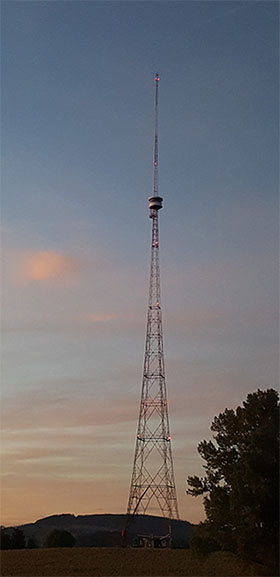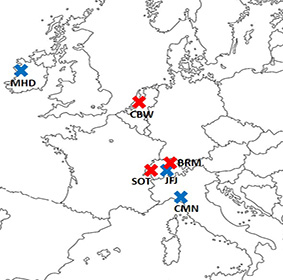IHALOME
Atmospheric halocarbons are monitored during two medium-term measurement campaigns in Switzerland, and a campaign in the Netherlands. Regional abundances, emissions and sources of the measured halocarbons are assessed by statistical data analysis and inverse modelling. New halogenated trace gases are searched for by employing advanced analytical measurement techniques.
IHALOME is divided into three parts:
- Beromünster (Central Switzerland) to cover the densely populated Swiss Plateau in comparison to the long-term large-scale measurements at the high-altitude research station at Jungfraujoch
- Sottens (Western Switzerland) to complement the western part of Switzerland and parts of southeastern France
- Cabauw (Netherlands) to monitor halocarbon emissions from the highly populated and in-dustrialized areas of Amsterdam, Utrecht and Rotterdam and comprising parts of the Benelux countries and Germany
The analytical instrument used within the campaigns is the well-established Medusa pre-concentration unit, coupled to gas chromatography – quadrupole mass spectrometry (GC-MS). The range of measured halogenated trace gases comprises an extended list of all AGAGE substances and covers the CFCs, HCFCs, HFCs and fourth generation HFOs.

Secondly, the project encompasses a refined source allocation and estimation of Swiss and European halocarbon emissions for the areas covered by the measurement campaigns. For this purpose, the FLEXPART-COSMO atmospheric transport model is combined with improved inversion methods. Applying the resulting models to the measured data allows to complement country-specific regional emission inventories (as reported within mutual treaties) with real world quantifications.
The third part of IHALOME comprises the reporting of newly detected halogenated substances in the atmosphere. Emerging halocarbons will be incorporated into the AGAGE measurement program in order to assess their global atmospheric abundance and locate important source regions.


